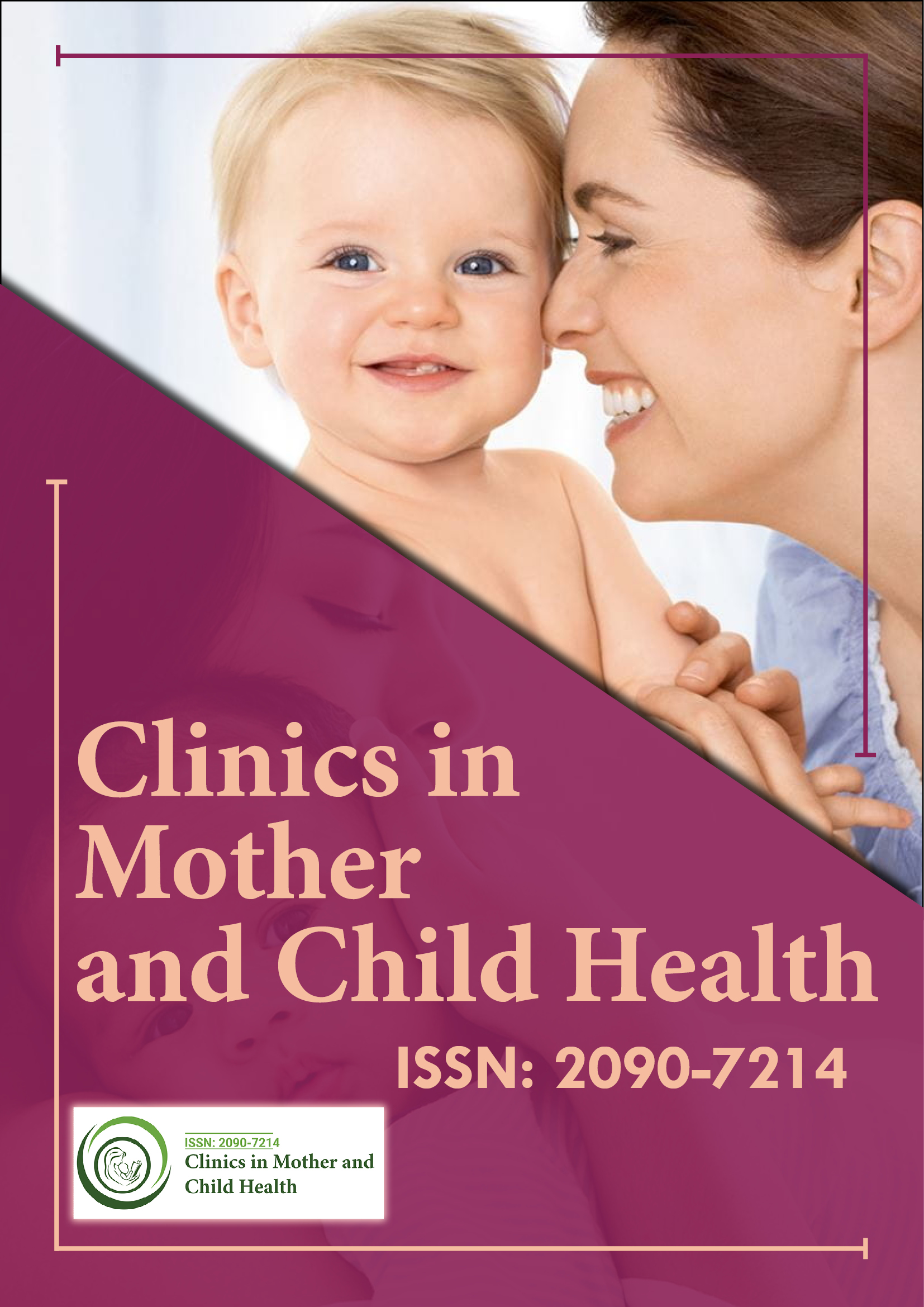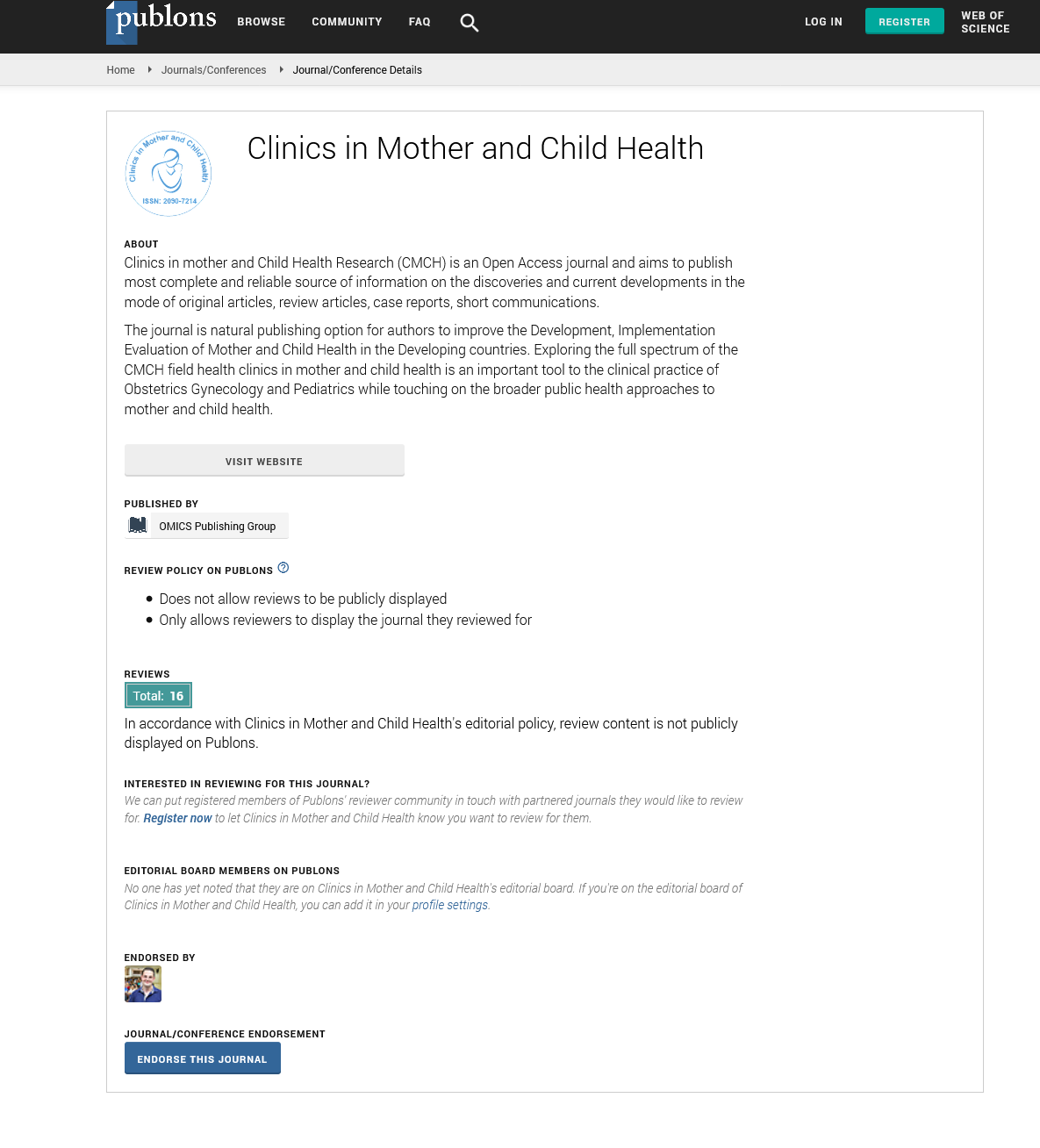Indexed In
- Genamics JournalSeek
- RefSeek
- Hamdard University
- EBSCO A-Z
- Publons
- Geneva Foundation for Medical Education and Research
- Euro Pub
- Google Scholar
Useful Links
Share This Page
Journal Flyer

Open Access Journals
- Agri and Aquaculture
- Biochemistry
- Bioinformatics & Systems Biology
- Business & Management
- Chemistry
- Clinical Sciences
- Engineering
- Food & Nutrition
- General Science
- Genetics & Molecular Biology
- Immunology & Microbiology
- Medical Sciences
- Neuroscience & Psychology
- Nursing & Health Care
- Pharmaceutical Sciences
Commentary - (2021) Volume 0, Issue 0
An Overview of Gestational Diabetes Mellitus and its Complications
Gianna Wilkie*Received: 09-Sep-2021 Published: 30-Sep-2021, DOI: 10.35248/2090-7214.21.s9.003
Description
For more than 50 years, hyperglycemia which develops during pregnancy and recovers after birth has been documented, although there is no universal agreement on the threshold hyperglycemic levels that was responsible for a diagnosis of "Gestational diabetes mellitus" (GDM) and hence therapy during pregnancy. The most prevalent medical consequence of pregnancy is gestational diabetes, and the frequency of undetected hyperglycemia and even overt diabetes in young women is on the rise. Major GDM risk factors include maternal overweight and obesity, later reproductive age, previous history of GDM, family history of type 2 diabetes mellitus, and ethnicity. An oral glucose tolerance test (OGTT) is commonly used to diagnose diabetes.
The major treatments for GDM are dietary changes and increased physical activity; however medication, usually insulin, is used if normoglycemia is not reached. In some countries, oral hypoglycemic medications such as metformin and glibenclamide (glyburide) are also utilised. Treatment improves immediate pregnancy outcomes by lowering foetal growth and obesity, as well as pregnancy-related hypertension. In both the mother and the newborn, GDM raises the risk of long-term problems such as obesity, poor glucose metabolism, and cardiovascular disease. Optimal mother-infant treatment during long-term follow-up remains a challenge, with only a few cases being implemented.
Key Points in the Treatment of Gdm
Lifestyle intervention with diet and physical activity is the cornerstone of treatment, and only a minority of women with gestational diabetes mellitus (GDM) need pharmacotherapy.
Diet
• Ensure sufficient intake of micronutrients and macronutrients, including >175g of carbohydrates daily
• Minimize glycaemic excursions by intake of low-glycaemicindex carbohydrates divided over several meals and snacks daily
• Provide appropriate level of gestational weight gain.
Physical activity
• Light exercise, such as walking, swimming and cycling
• Regimen appropriate for pregnancy
Pharmacotherapy
If the glycaemic goals are not attained within 1–2 weeks of initiating dietary changes and physical activity
• Insulin is the gold-standard treatment for hyperglycaemia
• Metformin may be chosen in selected cases, dependent on convenience and cost
Treatment after delivery
• Continue lifestyle interventions
• Encourage breastfeeding
• Pharmacotherapy can be stopped immediately after delivery
• Regular screening for the development of diabetes mellitus is recommended
Insulin medication remains the most extensively accepted pharmacological intervention for treating GDM. Glibenclamide (glyburide), after decades of wide use in the USA, is increasingly associated with mLGA babies and neonatal hypoglycaemia. Metformin, despite encouraging immediate gestation issues, is associated with lesser adiposity.
Attempts to prevent GDM through lifestyle changes, probiotics, inositol supplementation, and pharmaceuticals have not yielded consistent results, and none of these can be recommended for routine usage. To achieve the hoped-for reductions in both GDM prevalence and pregnancy problems, the focus of preventative efforts will most likely need to shift to the preconception period or very early in pregnancy. To turn the tide of these simultaneous global epidemics, population-based interventions to reduce the prevalence of obesity and hyperglycemia across the life course, particularly in girls and young women may be required.
The complex interplay of obesity, metabolic inflammation, and hyperglycaemia (caused in part by fat) as major causes of excessive foetal growth, other unfavorable pregnancy outcomes, and later impacts in children are yet poorly understood. Longterm follow-up results from the HAPO-FUS study reveal that maternal glycaemia has a stronger influence on offspring glucose metabolic state than previously anticipated, whereas the opposite appears to be true for offspring adiposity. These findings suggest that long-term therapies based on a better understanding of the underlying pathophysiology of GDM could be developed in the future.
Citation: Wilkie G (2021) An Overview of Gestational Diabetes Mellitus and its Complications. Clinics Mother Child Health. S9:003.
Copyright: © 2021 Wilkie G. This is an open-access article distributed under the terms of the Creative Commons Attribution License, which permits unrestricted use, distribution, and reproduction in any medium, provided the original author and source are credited.

